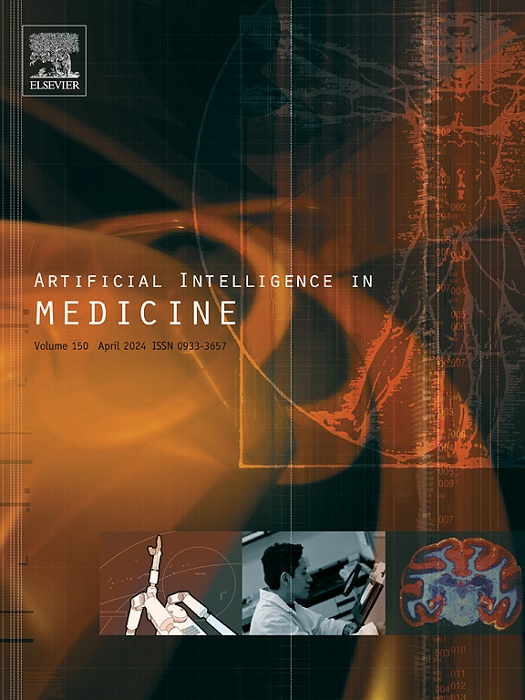利用学习图的概率分布之间的距离,为行动不便的患者制定个性化的康复轨迹。
IF 6.1
2区 医学
Q1 COMPUTER SCIENCE, ARTIFICIAL INTELLIGENCE
引用次数: 0
摘要
正在接受物理康复治疗的病人,可以从对他们在特定时间内取得的累积成绩进行可靠评估后得到的反馈中获益。在本文中,我们提供了一种方法,用于了解个别病人的康复轨迹,因为他们在进行锻炼时,是恢复危重病人丧失的运动能力的物理治疗的一部分。病人在连续进行给定锻炼时获得的运动恢复得分(MRS)之间的差异,是由随机图(后置)概率之间的统计距离/分歧给出的,而随机图是利用病人锻炼时在电子平台上记录的病人 20 个关节位置的时间序列数据以贝叶斯方式学习的。这样就能计算出患者每次运动时的 MRS,并据此绘制出恢复轨迹。我们将每个图作为在概率度量空间中绘制的随机几何图形来学习,并根据关节位置多变量时间序列数据的相关结构,确定图中任何边的闭式边际后验。在恢复学习的基础上,我们为具有特定行动障碍程度的患者提供了最佳运动程序建议。本文章由计算机程序翻译,如有差异,请以英文原文为准。
Individualised recovery trajectories of patients with impeded mobility, using distance between probability distributions of learnt graphs
Patients who are undergoing physical rehabilitation, benefit from feedback that follows from reliable assessment of their cumulative performance attained at a given time. In this paper, we provide a method for the learning of the recovery trajectory of an individual patient, as they undertake exercises as part of their physical therapy towards recovery of their loss of movement ability, following a critical illness. The difference between the Movement Recovery Scores (MRSs) attained by a patient, when undertaking a given exercise routine on successive instances, is given by a statistical distance/divergence between the (posterior) probabilities of random graphs that are Bayesianly learnt using time series data on locations of 20 of the patient’s joints, recorded on an e-platform as the patient exercises. This allows for the computation of the MRS on every occasion the patient undertakes this exercise, using which, the recovery trajectory is drawn. We learn each graph as a Random Geometric Graph drawn in a probabilistic metric space, and identify the closed-form marginal posterior of any edge of the graph, given the correlation structure of the multivariate time series data on joint locations. On the basis of our recovery learning, we offer recommendations on the optimal exercise routines for patients with given level of mobility impairment.
求助全文
通过发布文献求助,成功后即可免费获取论文全文。
去求助
来源期刊

Artificial Intelligence in Medicine
工程技术-工程:生物医学
CiteScore
15.00
自引率
2.70%
发文量
143
审稿时长
6.3 months
期刊介绍:
Artificial Intelligence in Medicine publishes original articles from a wide variety of interdisciplinary perspectives concerning the theory and practice of artificial intelligence (AI) in medicine, medically-oriented human biology, and health care.
Artificial intelligence in medicine may be characterized as the scientific discipline pertaining to research studies, projects, and applications that aim at supporting decision-based medical tasks through knowledge- and/or data-intensive computer-based solutions that ultimately support and improve the performance of a human care provider.
 求助内容:
求助内容: 应助结果提醒方式:
应助结果提醒方式:


